Learn how smoke in a can works—and why it is a convenient, reliable smoke detector tester
Smoke detectors are fundamental fire protection equipment, and they’ve saved innumerable lives by providing early warning of fires. National Fire Protection Association (NFPA) research reveals that 40% of home fire deaths happened where no smoke alarms were present, and 17% occurred when the smoke alarms were not functional. You’re probably familiar with some best practices in residential smoke detector maintenance, like replacing detectors every 10 years and checking the battery every month by pressing the “test” button.
But commercial facilities have additional requirements. And remember, the test button only checks whether the detector has power. According to the same NFPA report, only half of smoke alarm failures were the result of dead or missing batteries or a lack of hard-wired power. About one-fifth (21%) of all alarms did not activate because of unclassified reasons, a lack of cleaning, or a defective unit. Battery and other power-source tests are not enough to guarantee safety.
So how can you be sure smoke detectors are working correctly?
Smoke in a can is the answer. This simulated smoke is the perfect solution for both homes and larger facilities where functional testing is required by NFPA 72: National Fire Alarm and Signaling Code.
In this article, we look at the following:
- NFPA requirements for testing smoke detectors
- What canned smoke is
- How to test smoke detectors with smoke in a can
- How to clean smoke detectors
Testing smoke detectors: NFPA 72 requirements
The inspection, testing, and maintenance (ITM) of fire protection systems are vital to keeping equipment ready for an emergency. These tasks include checking smoke detectors, which spur an evacuation or quick action with a fire extinguisher in the early stages of a fire.
Functional tests of smoke detectors—how and how often
The requirements for testing smoke detectors are found in Table 14.4.3.2 of NFPA 72. System smoke detectors—hard-wired into the building and networked to one another—of all kinds need to be tested annually for proper function.
Again, functional testing goes beyond just testing the battery. A working smoke detector will admit smoke to the sensing chamber, detect it, and give an alarm response. NFPA 72 specifies annual testing requirements for detectors in occupancies that are not one- and two-family dwellings:
From the 2019 edition of NFPA 72
Table 14.4.3.2 Testing
- Initiating Devices (7) Smoke Detectors—functional test. Test smoke detectors in place to ensure smoke entry into the sensing chamber and an alarm response. Use smoke or a listed and labeled product acceptable to the manufacturer or in accordance with their published instructions. Other methods listed in the manufacturer’s published instructions that ensure smoke entry from the protected area, through the vents, into the sensing chamber can be used.
The most practical way to conduct this test is with an aerosol product (smoke in a can) that is listed for the purpose and acceptable to the smoke detector manufacturer.
System detectors in single- and two-family dwellings are also covered in Table 14.4.3.2, which says that functional tests should be conducted annually according to the manufacturer’s instructions.
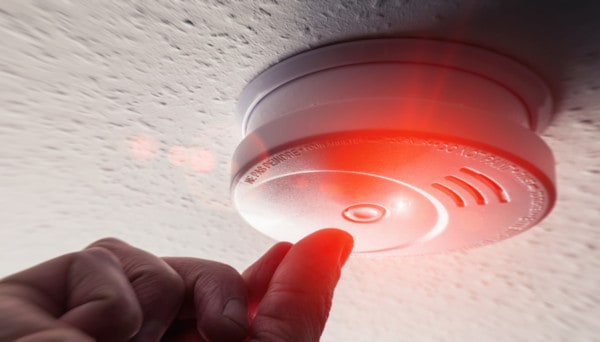
Specialized smoke detectors have other functional testing requirements
Thus far, we’ve outlined the functional test requirements for “traditional” smoke detectors—the ionization or photoelectric devices typically mounted on the ceiling. NFPA 72 requires specific functional testing for more specialized smoke detectors, including air-sampling detectors, duct-type detectors, projected beam detectors, and detectors with a thermal component.
In general, the requirements for these specialized detectors are the same as traditional models—they are tested annually with smoke or a listed product, and they pass the test if they properly admit smoke to the sensing chamber and give an alarm. But NFPA 72 provides additional, specific instructions in Table 14.4.3.2.17(7)(d-g):
- For air sampling detectors, tests should be conducted on the endpoint of each pipe run, and airflow should be checked at all other points of entry.
- For duct-type detectors that use sampling tubes, check that the duct airstream is sampled following manufacturer specifications.
- For projected beam detectors, the detector can be tested by interrupting the beam path with smoke, aerosols such as smoke-in-a-can, or an optical filter.
- For smoke detectors with a built-in thermal element, both the smoke-detecting and heat-detecting functions need to be operated annually.
Sensitivity tests for smoke detectors
The tests we’ve just described are functional, and they have two possible results—pass or fail. However, NFPA 72 specifies another annual test for sensitivity. All smoke detectors are designed to give an alert for a particular concentration of smoke in the air. This value is typically within a range that has a specific margin of error.
With dust accumulation and other wear, the sensitivity of a detector can “drift” as it ages. If it drifts low, you get nuisance alarms. If it drifts high, it might not sound in a real emergency. Thus, NFPA 72 also requires sensitivity tests in commercial and large residential systems:
From the 2019 edition of NFPA 72
14.4.4.3* In other than one- and two-family dwellings, sensitivity of smoke detectors shall be tested in accordance with 14.4.4.3.1 through 14.4.4.3.6.
Those code references give detailed information on the schedule (1 year after installation, alternating years after that) and method of sensitivity testing. Sensitivity testing may use canned smoke, but it also requires specialized equipment that can release controlled amounts of the aerosol:
14.4.4.3.6 The detector sensitivity shall not be tested or measured using any device that administers an unmeasured concentration of smoke or other aerosol into the detector or smoke alarm.
Sensitivity tests depend on releasing known (and often very small) amounts of aerosol near the detector. To pass a sensitivity test, a detector must give an alarm within the target range and not sound an alarm below that range. Detectors that fail sensitivity tests need to be cleaned and recalibrated or replaced.
What is canned smoke?
Smoke-in-a-can is a sprayable aerosol that mimics the properties of real smoke. By design, it can activate photoelectric, beam, and ionization smoke detectors like real smoke.
To be used for smoke detector testing, canned smoke needs to be tested and listed for the purpose by a safety organization. Look for the marks of the listing authority UL (formerly Underwriters Laboratory) and its sister organization ULC (Underwriters Laboratory of Canada) on canned smoke. Smoke detectors are also certified by UL under national signaling standards. The Smoke Centurion, Smoke Sabre, and Solo A10 smoke detector testers all carry UL and ULC listings.
When choosing canned smoke for your ITM requirements, you’ll also want to consider flammability and the environmental impact of the spray, as well as its compatibility with other testing equipment.
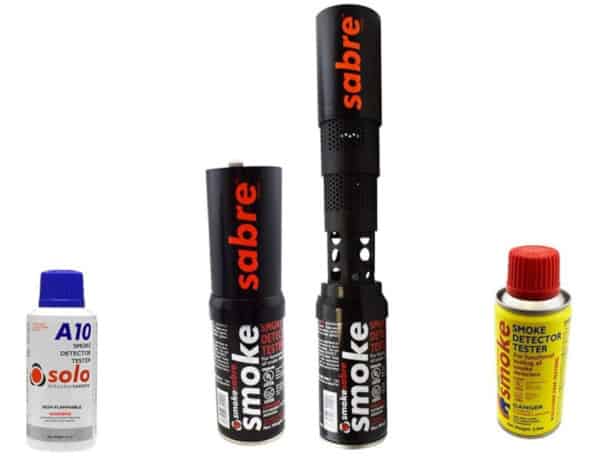
Smoke in a can: flammability and environmental factors
In an aerosol, the propellant is the gas in which another compound is “dissolved.” Compounds known as chlorofluorocarbons (CFCs; compounds with a central carbon chain and attached chlorine and fluorine atoms) were used as aerosol propellants starting in WWII. DuPont’s compound Freon-12 (which you may recognize as a refrigerant) was adapted for the US campaign in the Pacific to make aerosol “bug bombs” that dispensed insecticide.
CFC refrigerants and propellants like Freon have been actively phased out, though. When released into the atmosphere, they deplete the ozone layer, the protective atmospheric layer that absorbs and filters harmful UV radiation.
Two significant alternatives to CFCs are hydrocarbons and hydrofluoroolefins. Hydrocarbons like butane don’t deplete the ozone layer, but they are flammable. Hydrofluoroolefins, or HFOs, are similar to CFCs—they have carbon, fluorine, and hydrogen. However, they are more stable and don’t deplete ozone.
The Solo A10 Smoke Detector Tester uses an HFO, 1,3,3,3-tetrafluoropropene, as its main ingredient. This non-flammable, non-toxic gas has a low global-warming potential but these benefits come with a price tag.
The Smoke Centurion and Smoke Sabre aerosols cost about half of what the Solo A10 does. They are also non-ozone-depleting—but they are flammable, with butane and propane as major ingredients. Thus, be careful using them around open flames or heat sources.
Smoke in a can: compatibility with attachments
Many smoke detectors are mounted high on ceilings. And in a large building, climbing a ladder to test every smoke detector can be a considerable chore, not to mention a safety risk. Poles with specially designed dispenser heads make it easy to spray canned smoke without climbing.
Aerosol dispenser heads accept aerosol cans such as the Solo A10 and Smoke Centurion. The cup of the dispenser fits around the smoke detector. When pressed against the ceiling, a mechanism in the dispenser releases a spray of aerosol.
The Solo 330 dispenser fits around 4” diameter detectors, and the Solo 332 dispenser fits around 7” diameter detectors.
When paired with telescoping poles such as the Solo 100 Telescopic No-Climb Extension Pole, which is 14’ long and non-conductive, these devices make testing smoke detectors easy. Heads for testing heat detectors are also available.
How to use smoke in a can
Testing smoke detectors for functionality with canned smoke couldn’t be easier. It’s a point-and-shoot deal. Simply:
- Shake the can well
- Aim it at the detector
- Spray for 0.5 to 1 seconds
- Wait for the alarm to sound
The same procedure applies when using dispenser heads on poles—release a short burst of spray and wait for the alarm.
This video from SER Safety shows how easy it is. Turn your volume down—the smoke is fake, but the alarms are real:
How to clean smoke detectors
Sometimes smoke detectors don’t pass the test. What do you do if your detector sounds when you press the test button, but it doesn’t give an alarm when you use canned smoke? You may have to replace it—but you might just need to clean it. The manufacturer of your smoke alarm should provide instructions for safe and proper cleaning. Depending on these instructions, local laws, and your conditions, a 6-month cleaning schedule is usually appropriate.
To clean a detector, you might vacuum away dust and cobwebs that obstruct the entrance of smoke and the function of the electronics. Or, you might clear away debris with canned air. But watch out! Never spray cleaners, other chemicals, or water to clean a smoke detector. Doing so will damage the detector; only canned air will do.
The BlowOut and Solo A7 air dusters are good options for this—non-flammable, CFC-free, and they leave no damaging residue. After cleaning the detector, test it again.
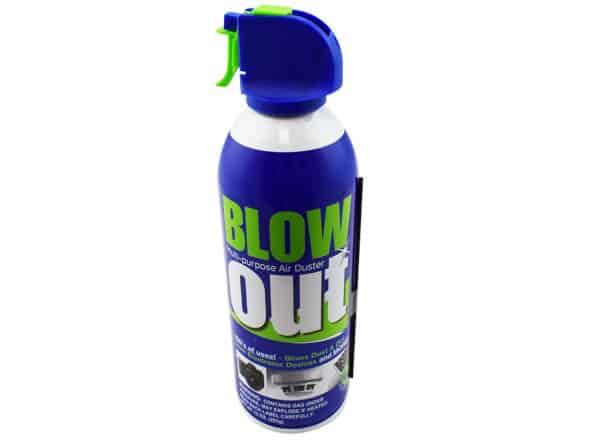
Smoke in a can is the best way to test common smoke detectors
As indicated by NFPA 72, testing smoke detectors needs to go beyond simple push-button tests. Functional and sensitivity testing uses smoke, whether real or from a can, to check whether the sampling and sensing mechanisms of a smoke detector work as intended. These tests should be conducted annually.
Smoke in a can makes this process easy. UL-listed aerosol sprays quickly check whether a smoke detector will respond to smoke. All canned smoke is CFC-free, and non-flammable options are available. And non-conductive telescoping poles with attachments make it easy to test smoke detectors at height—no ladder needed.
Ready to test your smoke detectors? Outfit yourself with the right testing equipment and accessories. Shop our smoke in a can selection, including:
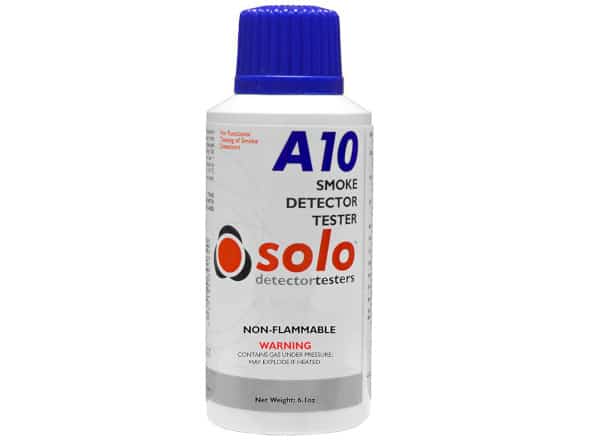
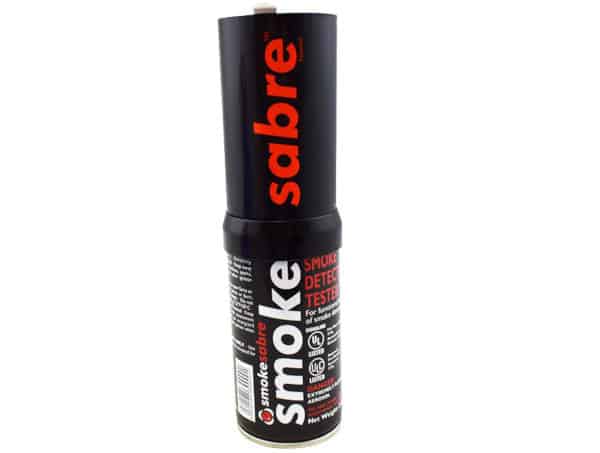
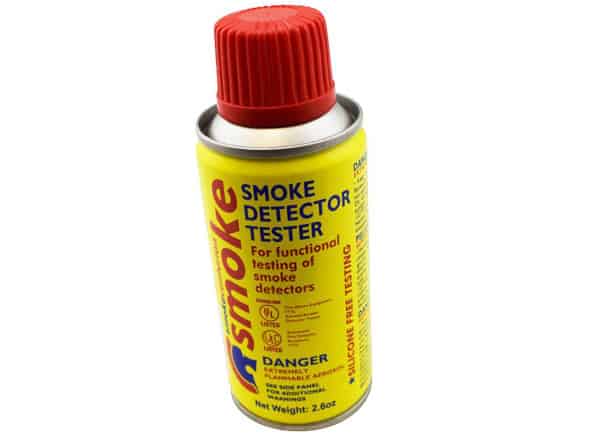
Also, check out our pole accessories, including Solo’s 4-foot pole extender, their 7.2-foot telescoping pole, and their 14-foot telescoping pole. They’re all non-conductive, and they don’t whip or bend.
The poles will need tester heads, though. The Solo line of attachments is perfect for the job. Check out:
- The Solo 200 attachment for grabbing and removing smoke detectors
- The Solo 330 canned smoke dispenser head, which fits around detectors up to 4” in diameter
- The Solo 332 canned smoke dispenser head, which fits around detectors up to 7” in diameter
- The Solo 460 cordless heat detector tester, perfect for testing combined smoke and heat detectors
Shop for all your smoke detector testing needs in our full online inventory.
If you have questions, reach out to us at 1 (888) 361-6662 or support@qrfs.com.
This blog was originally posted at blog.qrfs.com. If this article helped you, check us out at Facebook.com/QuickResponseFireSupply or on Twitter @QuickResponseFS.



I used the yellow the smoke centrurion, and now I’m having a terrible Soar throat, is there any recommendations?
Johnny — We can’t provide any specific medical recommendations, other than see a healthcare provider for any issues. Here is the safety data sheet for the Smoke Centurion, however. It contains propane, butanol, and ethanol, which should (of course) not be breathed in closely/directly, but notes ingestion is an “unlikely route of exposure” and immediate medical attention is “unlikely to be required but if necessary treat symptomatically.” Regarding usage, closely breathing in any aerosol should be avoided, and there are telescoping access poles to reach high detectors and provide some distance. But the product is also designed to be used hand-held without a likely hazard. Again, please consult a physician if you have any issues, and they may be able to pinpoint the cause.
I sprayed smoke detector test spray on the detector. After spraying, how long will it take for the alarm to stop? How many minutes should I wait?
murat — We suggest product manuals as the best source for your question, related to the specific manufacturer. Here are the manuals for Solo smoke detectors, if that is the brand you are using. Thanks for the question!